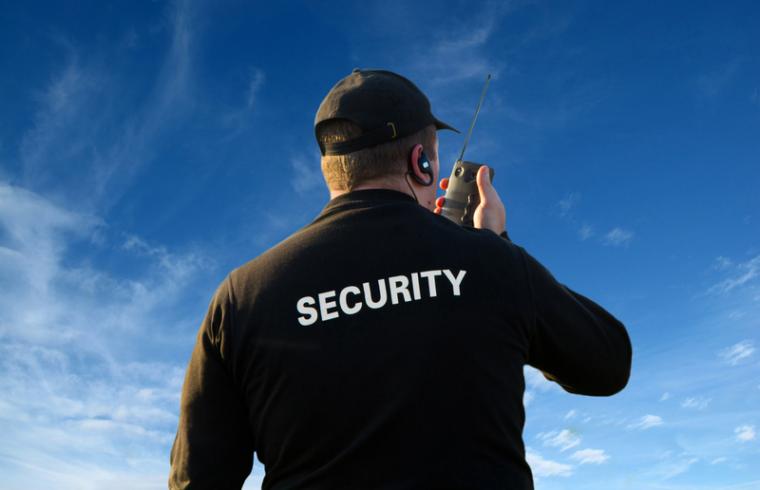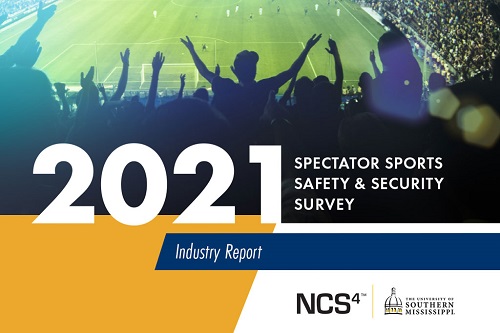
 What do spectators want from security when they go to games and tournaments? The National Center for Spectator Sports Safety and Security (NCS4) at The University of Southern Mississippi has some important insights.
What do spectators want from security when they go to games and tournaments? The National Center for Spectator Sports Safety and Security (NCS4) at The University of Southern Mississippi has some important insights.
The Center has published results from its Spectator Sports Safety and Security Survey in an industry report. The research report is the first of its kind published by the Center and will be conducted annually.
The report can be downloaded free of charge here.
This study aims to gauge spectators’ perceptions of safety and security at events they have attended, their awareness of measures to help reduce and prevent problems, and their support for policies in place as the public returns to live events. Over the past 18 months, the industry has come to consider certain precautions in planning efforts as temporary measures and for the long term.
The Institutional Review Board (IRB)-approved spectator survey consisted of 63 questions divided into three parts: Part 1 – general demographics and attendance habits, Part II – perceptions of general safety and security practices, and Part III – perceptions of health-related safety and security practices.
An online data collection and analysis organization was utilized to distribute the survey on July 14 and 19, 2021. Individuals 18 years or older who had attended a live professional or intercollegiate sporting event within the last three years completed the survey.
Full information about NCS4 can be obtained by calling 601.266.6183 or visitingncs4.usm.edu.
Participant Demographics and Attendance Habits
- 609 total participants representing 528 ZIP codes across the continental U.S.
- Ages ranged from 18 to 75+ years old, with most between 25-44 years of age (43.7%).
- Approximately 40% have attained a bachelor’s degree or higher, and the primary income range is $25K-$99K (62.4%).
- Most popular sporting events attended include MLB (49.9%), NFL (37.1%), and college football (31.9%).
- 21% were season ticket holders.
- 62.4% typically pay for tickets in the $56-$65 range or less.
- Majority of participants arrive at their event 30 minutes before start time.
- 89.3% indicated that 10-30 minutes is the most acceptable amount of time to wait in line before entry.
Perceptions of General Safety and Security Practices
- 73.2% (agreed/strongly agreed) consider safety and security measures when deciding to attend an event and 77% (agreed/strongly agreed) prefer security measures to be visible at an event.
- Law enforcement presence, venue security personnel presence, screening detection technologies, bag searches, security cameras, security wands, ability to report an incident, and the use of K-9 units were highly supported measures.
- More women than men indicated disagreement or strong disagreement with a no-bag policy.
- Most participants were aware of their event’s safety and security measures before attendance (63.9% agreed/strongly agreed) and 76.8% know how to seek emergency help at an event.
- Participants primarily receive safety and security-related information via the website, signage inside the venue, venue entry point, and venue announcements.
- Before an event occurs, the preferred methods for receiving safety and security information were website, email, and ticket.
Perceptions of Health-Related Safety and Security Practices
- 75.4% of participants plan to attend an event in 2021 and those who do not plan to attend an event selected the health concerns of 2020 as the primary reason (74.7%).
- Approximately 68% have received the maximum number of available vaccines and two-thirds of those not vaccinated do not plan to get vaccinated.
- About one-third (28.2%) of the participants have attended a sporting event without vaccination.
- Participants selected high percentages of agreement or strong agreement for temperature checks, digital health passes (proof of vaccination or negative test), and enhanced cleaning and sanitizing services.
- The most important policy for participants in their decision-making to attend future sporting events was a facility certificate of hygiene/disinfectant compliance (M=3.79), with 62.3% of participants agreeing or strongly agreeing.
- 18-24-year-olds trended more towards the importance of contactless/cashless operations, designated areas for drinking/eating and mask requirements when deciding to attend an event than other age groups.
- Most respondents would attend events with capacity restrictions. The indicated attendance for these respondents decreased slightly at 100% capacity.
- Approximately 70% of participants were willing to pay a minimal ticket fee to offset the cost of safety and security measures, ranging from $0.50 - $5.00.


